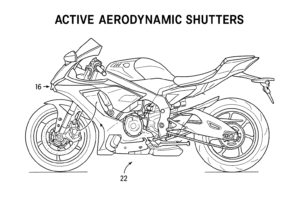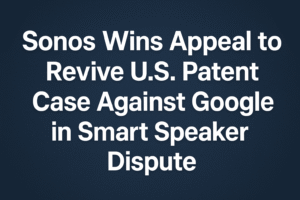As artificial intelligence (AI) becomes increasingly embedded in research and innovation, intellectual property (IP) laws are facing unprecedented challenges. A recent analysis published on IAM by IP experts Christopher Buntel and Tim Londergan titled “AI Is Eating Your IP” warns that AI’s influence is blurring the lines of inventorship, undermining patent reliability, and reshaping trade secret strategies across industries.
AI’s Growing Role in Innovation: A Legal Dilemma
The traditional IP system—designed around human inventors—is being tested by AI-driven developments. From biotech to software, AI models now generate ideas, molecules, and inventions, often with limited human involvement. This automation forces a reassessment of the concept of “inventorship,” which remains a legally human-centric standard.
Experts caution that while humans may still be listed as inventors on patent applications, the actual contribution of AI must not be overlooked. Patent offices and courts could soon require stronger evidence of human input to validate inventorship claims and maintain enforceability.
Rising Standards: The Obviousness Problem
One major concern is how AI’s predictive capabilities could raise the legal threshold for what is considered “non-obvious.” If AI can easily arrive at a particular invention using existing data and algorithms, patent examiners might classify the invention as obvious—even if it would have previously been deemed novel.
This presents a strategic risk for patent filers. To avoid invalidation, inventors and companies are being urged to document the precise role of human creativity in the development process, distinguishing it from what AI merely suggested or generated.
From Patent to Trade Secret: The Shifting Battlefield
As the patent process becomes more uncertain due to AI’s expanding capabilities, many companies are increasingly turning to trade secrets to protect their innovations. However, the AI era presents new vulnerabilities here as well.
AI tools are becoming capable of reverse-engineering not only physical products but also data-driven models, algorithms, and operational strategies—traditionally safeguarded as trade secrets. What was once protected due to its complexity can now be potentially deciphered by an AI system trained on publicly available information.
A New Approach to Trade Secret Protection
Buntel and Londergan emphasize the need for a shift in how trade secrets are identified and managed. Rather than relying solely on protecting discrete elements such as formulas or algorithms, companies must focus on securing system-level secrets—the intricate interplay of data pipelines, operational workflows, business logic, and technical frameworks.
Comprehensive documentation is key. Businesses should meticulously record not only the individual components but also the architecture of how these parts work together. This makes it significantly harder for AI-driven reverse engineering to uncover the broader value proposition behind the protected information.
Strategic Recommendations for IP Stakeholders
In the face of this evolving landscape, the article offers a roadmap for companies to safeguard their IP:
For patent filers: Clearly document the human contribution to any AI-assisted invention. Demonstrating a human “spark of ingenuity” is vital.
For trade secret managers: Focus on documenting entire systems and workflows rather than isolated technical know-how.
For legal teams: Prepare to adapt IP strategies that combine traditional protections with emerging risks posed by AI capabilities.
Conclusion: A Call to Action in the Age of AI
The emergence of AI as a co-creator of innovation is not just a technical shift—it’s a legal and strategic one. As Buntel and Londergan stress, intellectual property professionals must evolve their methods or risk being outpaced by the very tools that were meant to empower them. Whether through more rigorous documentation, revised IP frameworks, or a more holistic understanding of value creation, adapting to the age of AI is no longer optional—it’s essential.




